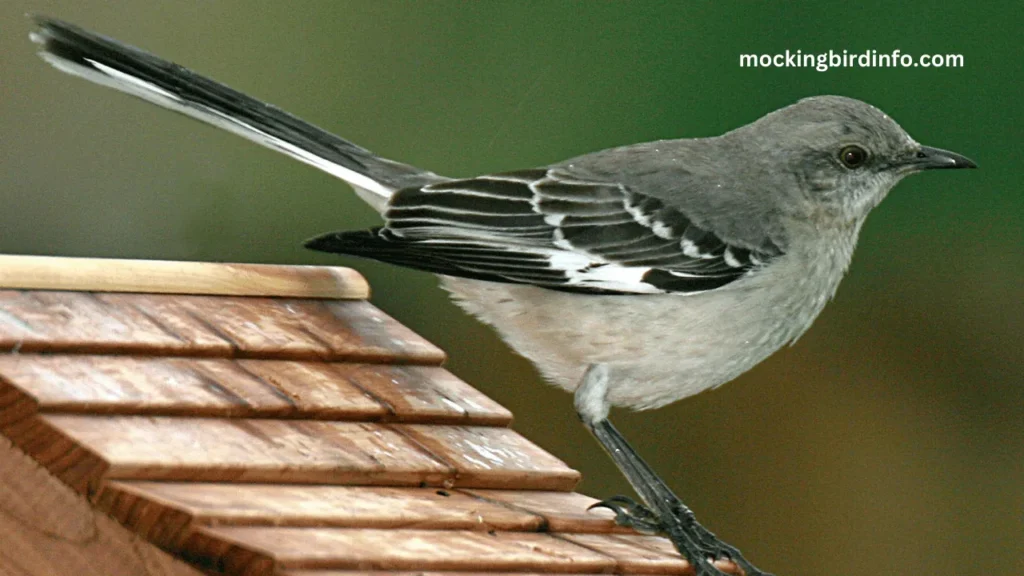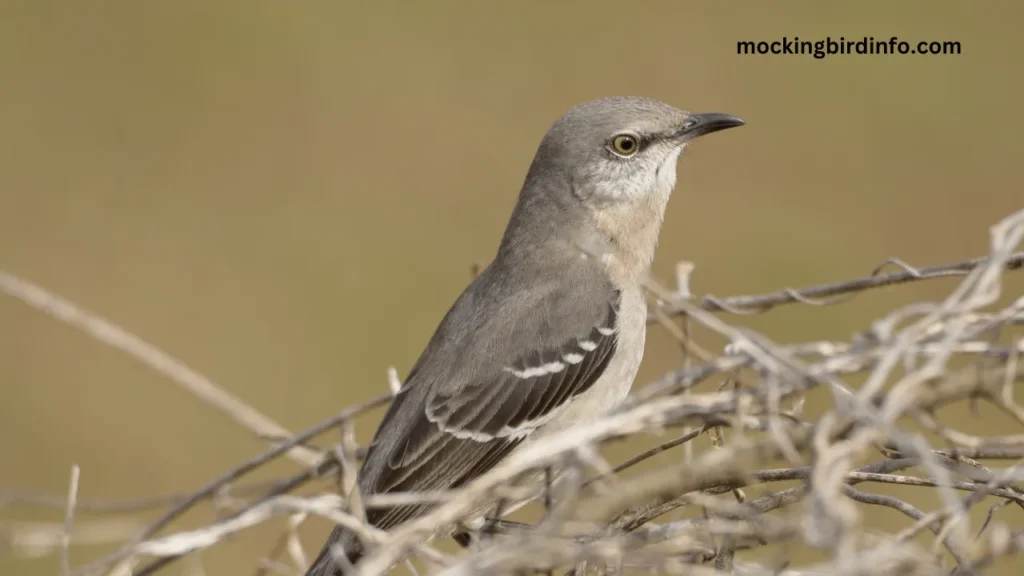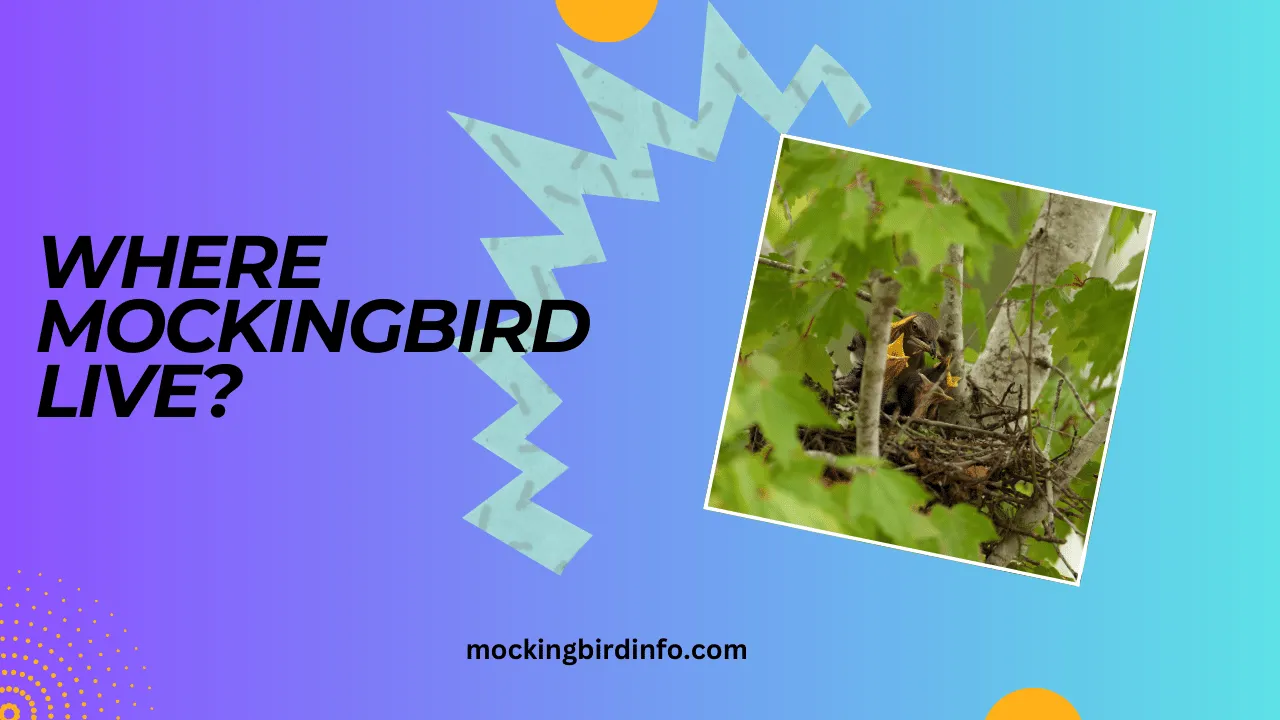In the gentle quiet of dawn, a melody breaks the stillness, intricate and piercingly beautiful. Mockingbirds, nature’s skilled mimics, announce their presence not just with song but with an unmatched ability to adapt and thrive.
From urban jungles to rural landscapes, their adaptability has earned them a unique place in the avian world. But have you ever wondered where these musical virtuosos truly call home?
Understanding the habitats of mockingbirds isn’t just a curiosity—it’s a lesson in how nature adapts to changing environments.
Whether it’s your backyard, a city park, or the rural countryside, the presence of a mockingbird signifies more than just a melodic interlude; it’s a glimpse into the complex relationship between wildlife and its surroundings.
This blog post will explore the fascinating habitats of mockingbirds, delving into their preferences, geographic range, and the factors influencing where they choose to settle.
By the end, you’ll not only know where mockingbirds live but also understand why their habitat choices matter—and how you can help preserve them.

Contents
Preferred Habitats
Mockingbirds are nature’s versatile residents, finding a home in diverse settings. Urban environments are among their favorites, where they nest in trees, shrubs, and even man-made structures. The abundance of food scraps, insects, and water sources makes cities an appealing option for these resourceful birds.
In suburban areas, mockingbirds thrive due to the mix of greenery and human presence. Lawns, gardens, and parks create an inviting landscape rich in food and nesting sites.
These spaces strike a perfect balance between natural and artificial elements, making them ideal for mockingbirds to flourish.
When it comes to rural landscapes, mockingbirds gravitate towards open fields, woodlands, and agricultural areas. Here, they find an abundance of insects and fruits while benefiting from reduced human interference.
Their ability to adapt to such varied habitats showcases their incredible resilience and survival skills.
Range and Distribution
The native range of mockingbirds extends across the southern and eastern United States, stretching from the Atlantic coast to parts of the Midwest. Their presence is a hallmark of these regions, where they are both celebrated and protected.
Beyond their native boundaries, mockingbirds have been introduced to areas like Hawaii and Puerto Rico, showcasing their ability to thrive in new environments.
Their adaptability enables them to establish populations in regions with suitable climates and resources. Several factors influence their distribution, including climate conditions that dictate breeding seasons and food availability.
Additionally, human activities such as urbanization and landscaping play a crucial role in expanding their habitats.

Factors Affecting Habitat Choice
Mockingbirds select their habitats based on several critical factors:
- Food Availability
Mockingbirds are omnivorous, thriving on a diet of insects, fruits, and berries. Areas rich in food sources are more likely to attract these birds, as their survival depends on consistent nourishment. - Nesting Sites
Trees, shrubs, and dense vegetation provide ideal nesting locations for mockingbirds. They seek areas where their nests are sheltered from predators and harsh weather conditions. - Predator Pressure
The presence of predators like cats, hawks, and snakes can deter mockingbirds from settling in specific areas. Lower predator density often means safer nesting and better survival rates. - Human Disturbance
While mockingbirds are resilient, excessive noise pollution or habitat destruction can disrupt their breeding and nesting patterns. Urban areas with controlled disturbances are more favorable. - Climatic Conditions
Mockingbirds prefer temperate climates where they can breed and feed year-round. Harsh weather extremes can limit their range and population density.
Conservation and Habitat Protection
Protecting mockingbird habitats is vital for their long-term survival. Natural habitats like forests and woodlands must be preserved to ensure their populations thrive.
Planting native shrubs and trees in urban and suburban areas can also create additional nesting sites. Conservation efforts focus on addressing threats like habitat destruction, pesticide use, and climate change.
Organizations and citizen science programs monitor mockingbird populations and advocate for their protection. By participating in these initiatives, individuals can make a meaningful impact on conservation efforts.
Engaging in bird-friendly practices, such as reducing pesticide use and providing food sources like fruiting plants, ensures that mockingbirds continue to thrive. Everyone has a role to play in supporting these remarkable birds and preserving their habitats.
Conclusion
Mockingbirds are a testament to the beauty and resilience of nature. They thrive in urban, suburban, and rural environments, adapting to challenges and finding opportunities wherever they go.
Their wide geographic range and varied habitat preferences reflect their adaptability, but these same traits make them vulnerable to environmental changes.
Climate change, habitat destruction, and urbanization pose significant threats to mockingbirds. Preserving their habitats through conservation initiatives and sustainable practices is crucial to their survival.
By taking simple actions, such as planting native trees or reducing pesticide use, individuals can contribute to a brighter future for these birds.
As stewards of the environment, we must ensure that mockingbirds continue to fill our mornings with their songs, reminding us of nature’s resilience and our responsibility to protect it.
FAQs
1. What kind of environments do mockingbirds prefer?
Mockingbirds thrive in urban, suburban, and rural areas with abundant food sources and nesting sites.
2. Are mockingbirds found outside the United States?
Yes, mockingbirds have been introduced to regions like Hawaii and Puerto Rico, where they have established populations.
3. What do mockingbirds eat?
Mockingbirds have a varied diet, including insects, fruits, and berries, making them highly adaptable to different habitats.
4. Do mockingbirds migrate?
Most mockingbirds are year-round residents, but some populations may migrate short distances in search of food.
5. How do human activities impact mockingbirds?
Urbanization, habitat destruction, and noise pollution can disrupt mockingbird populations, although they often adapt to human presence.
6. What are the predators of mockingbirds?
Common predators include cats, hawks, and snakes, which can threaten their nests and chicks.








